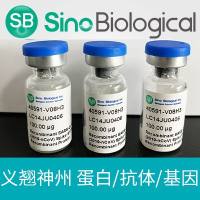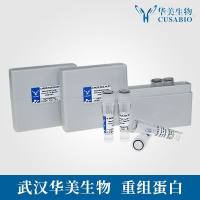Agarose gel electrophoresis(琼脂糖凝胶电泳)
互联网
Agarose gel electrophoresis (2) is employed to check the progression of a restriction enzyme digestion, to quickly determine the yield and purity of a DNA isolation or PCR reaction, and to size fractionate DNA molecules, which then could be eluted from the gel. Prior to gel casting, dried agarose is dissolved in buffer by heating and the warm gel solution then is poured into a mold (made by wrapping clear tape around and extending above the edges of an 18 cm X 18 cm glass plate), which is fitted with a well-forming comb.
The percentage of agarose in the gel varied. Although 0.7% agarose gels typically are used, in cases where the accurate size fractionation of DNA molecules smaller than 1 kb is required, a 1, 1.5, or 2% agarose gel is prepared, depending on the expected size(s) of the fragment(s). Ethidium bromide is included in the gel matrix to enable fluorescent visualization of the DNA fragments under UV light. Agarose gels are submerged in electrophoresis buffer in a horizontal electrophoresis apparatus. The DNA samples are mixed with gel tracking dye and loaded into the sample wells. Electrophoresis usually is at 150 - 200 mA for 0.5-1 hour at room temperature, depending on the desired separation.
When low-melting agarose is used for preparative agarose gels, electrophoresis is at 100-120 mA for 0.5-1 hour, again depending on the desired separation, and a fan is positioned such that the heat generated is rapidly dissipated. Size markers are co-electrophoresed with DNA samples, when appropriate for fragment size determination. Two size markers are used, phi-X 174 cleaved with restriction endonuclease HaeIII to identify fragments between 0.3-2 kb and lambda phage cleaved with restriction endonuclease HindIII to identify fragments between 2-23 kb. After electrophoresis, the gel is placed on a UV light box and a picture of the fluorescent ethidium bromide-stained DNA separation pattern is taken with a Polaroid camera.
Protocol
1. Prepare an agarose gel, according to recipes listed below, by combining the agarose (low gel temperature agarose may also be used) and water in a 500 ml Ehrlenmeyer flask, and heating in a microwave for 2-4 minutes until the agarose is dissolved.
| 0.7% | 1.0% | 2.0% | |
| agarose | 1.05 g | 1.5 g | 3.0 g |
| 20X TAE | 7.5 ml | 7.5 ml | 7.5 ml |
| ddH2O | 142.5 ml | 142.5 ml | 142.5 ml |
| EtBr (5 mg/ml) | 25 μ| | 25 μ| | 25 μ| |
| total vol | 150 ml | 150 ml | 150 ml |
Genetic technology grade (800669) or low gel temperature (800259) agarose from Schwarz/Mann Biotech.
2. Add 20X TAE and ethidium bromide (EtBr), swirl to mix, and pour the gel onto a taped plate with casting combs in place. Allow 20-30 minutes for solidification.
3. Carefully remove the tape and the gel casting combs and place the gel in a horizontal electrophoresis apparatus. Add 1X TAE electrophoresis buffer to the reservoirs until the buffer just covers the agarose gel.
4. Add at least one-tenth volume of 10X agarose gel loading dye to each DNA sample, mix, and load into the wells. Electrophorese the gel at 150-200 mA until the required separation has been achieved, usually 0.5-1 hour (100-120 mA for low gel temperature agarose), and cool the gel during electrophoresis with a fan. Visualize the DNA fragments on a long wave UV light box and photograph with a Polaroid camera









